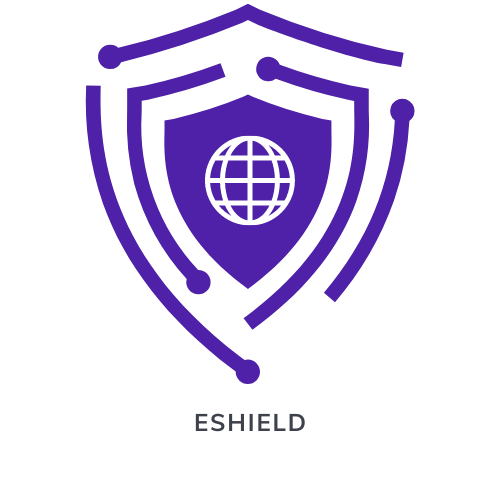What Is the Purpose of PCI DSS and Why Does It Matter?
Many businesses in the United Arab Emirates handle credit card payments. With more digital transactions, the risk of credit card info being stolen has grown. This is why knowing the PCI DSS purpose is so important.
The Payment Card Industry Data Security Standard (PCI DSS) sets security standards for companies that handle credit card info. A vulnerability assessment is key to meeting PCI DSS requirements. It helps find and fix security weaknesses.

In the UAE, getting PCI DSS compliant might seem hard. But with the right help, it’s doable. eshielditservices can guide your business through PCI DSS. They ensure your customers’ sensitive info is safe.
Key Takeaways
- Understanding PCI DSS is key for businesses that handle credit card payments.
- A vulnerability assessment is vital to spot security gaps.
- PCI DSS compliance protects customers’ sensitive info.
- eshielditservices can help your business meet PCI DSS standards.
- Staying compliant is an ongoing effort, not a one-time task.
What is PCI DSS?
The Payment Card Industry Data Security Standard (PCI DSS) is a set of security rules. It ensures companies that handle credit card info keep it safe. This helps protect cardholder data and lowers fraud risks.
Definition and Scope
PCI DSS is a detailed security standard. It covers security management, network architecture, and software design. It’s for all payment card processing entities, like merchants and financial institutions.
It includes security measures like firewalls and encryption. Regular security checks are also part of it. Companies like eshielditservices help businesses meet these standards.
History and Development
PCI DSS was created by the Payment Card Industry Security Standards Council (PCI SSC). This group includes Visa, Mastercard, and others. It was launched in 2004 to standardize data security in the payment card industry.
Over time, PCI DSS has updated to fight new security threats. Now, it includes penetration testing as a key part of security.
The Core PCI DSS Purpose
PCI DSS is all about keeping cardholder data safe and lowering the chance of data breaches. It does this by setting strict rules for businesses. These rules help protect sensitive cardholder info.
Protecting Cardholder Data
Keeping cardholder data safe is key to PCI DSS. This means using strong security like encryption and secure storage for sensitive info. Businesses must also make sure their systems don’t let unauthorized access to cardholder data.
For example, using firewalls and keeping antivirus software up to date is vital. Also, watching network traffic and using secure ways to send data makes things safer.
| Security Measure | Description | Benefit |
|---|---|---|
| Encryption | Converting data into a code to prevent unauthorized access | Protects sensitive information |
| Secure Storage | Storing data in a secure environment | Prevents data breaches |
| Firewalls | Network security systems controlling incoming and outgoing traffic | Blocks unauthorized access |
Reducing Fraud and Data Breaches
PCI DSS also aims to cut down on fraud and data breaches. It does this by using vulnerability assessments and penetration testing. These help find and fix weaknesses before they can be used by hackers.
Regular checks for vulnerabilities find system weaknesses. Penetration testing, or simulating cyber-attacks, tests defenses. Fixing these weaknesses greatly lowers the risk of data breaches and fraud.
Key Stakeholders in PCI DSS Compliance
PCI DSS compliance needs the help of many important people. Keeping cardholder data safe is a job for everyone. It requires teamwork and smooth communication.
Payment Card Brands
Brands like Visa, Mastercard, and American Express are key in making sure PCI DSS rules are followed. They set the standards for keeping cardholder data safe. They also offer help and resources to make sure everyone meets these standards.
Merchants and Service Providers
Merchants and service providers handle cardholder data. They must protect this sensitive information. eshielditservices offers assessments and penetration testing to find and fix security issues.
Acquiring Banks
Acquiring banks handle transactions for merchants. They play a big part in making sure PCI DSS rules are followed. By checking on merchants, acquiring banks help keep the payment system safe.
The 12 Requirements of PCI DSS
The Payment Card Industry Data Security Standard (PCI DSS) has 12 key rules for keeping cardholder data safe. These rules help organizations that handle payment card info keep their data secure.
Building and Maintaining Secure Networks
The first step to follow PCI DSS is to build and keep secure networks. This means setting up firewalls to protect data and not using default passwords. Secure network setup stops unauthorized access.

Protecting Cardholder Data
Keeping cardholder data safe is a big deal. This means encrypting data when it’s sent over public networks and hiding the primary account number (PAN). Encryption is key to protecting sensitive info.
Vulnerability Management
Managing vulnerabilities is key to avoiding data breaches. Companies must protect systems from malware and keep anti-virus software up to date. They also need to fix vulnerabilities in systems and apps. Regular vulnerability assessments find security gaps.
Access Control and Authentication
Access control and authentication are important for PCI DSS. This means limiting who can see cardholder data, giving each person a unique ID, and using two-factor authentication for remote access. Strong authentication makes sure only the right people can see sensitive data.
Following these 12 rules helps organizations keep cardholder data safe and stay PCI DSS compliant. It’s important to keep checking these rules to stay safe from security threats.
PCI DSS Compliance Levels
Businesses need to know their PCI DSS compliance level to meet security standards. The Payment Card Industry Data Security Standard (PCI DSS) divides businesses into four levels. These levels are based on the number of transactions they handle each year.
The compliance level depends on the number of card transactions a business handles. Smaller businesses have simpler security measures. Larger businesses face stricter rules.
Level 1-4 Compliance Requirements
PCI DSS compliance levels range from Level 1 (the highest) to Level 4 (the lowest). Level 1 merchants handle over 6 million card transactions annually. They must have an annual on-site audit by a Qualified Security Assessor (QSA).
Level 2 and Level 3 merchants have fewer transactions. They must complete an annual Self-Assessment Questionnaire (SAQ). Level 4 merchants, with the fewest transactions, also do an SAQ but with less strict rules.
Determining Your Business’s Compliance Level
To find your business’s compliance level, you need to know your annual transaction volume. Your payment processor or acquirer can provide this info. With this knowledge, you can figure out your compliance level and the needed steps, like penetration testing and vulnerability assessments.
Knowing and meeting the right PCI DSS compliance level is key to protecting your customers’ data. It helps avoid fines and keeps your reputation safe. For UAE businesses, following PCI DSS standards is vital for trust in the local market.
Consequences of PCI DSS Non-Compliance
Not following PCI DSS rules can hurt businesses that deal with payment card info. It’s very important to follow these rules. Not doing so can cause many problems.
Financial Penalties
One big problem is the money fines. Companies that don’t follow PCI DSS rules might get big fines. For example, eshielditservices says these fines can be really high. They depend on how bad the non-compliance is and the merchant’s level.
| Compliance Level | Fine Range |
|---|---|
| Level 1 | $5,000 – $100,000 |
| Level 2 | $1,000 – $50,000 |
| Level 3 & 4 | $500 – $10,000 |
Reputational Damage
Not following PCI DSS can also hurt a company’s image. A data breach or non-compliance issue can make customers lose trust. This can lead to losing customers and money. The damage to reputation can last a long time and be hard to fix.
Legal Implications
Not following PCI DSS can also lead to legal problems. Companies might face lawsuits from customers or regulators. This can cost a lot of money and make the financial problems worse.
In short, not following PCI DSS can hurt a business a lot. It can affect money, reputation, and legal issues. Companies that handle payment card info must focus on following PCI DSS rules to avoid these problems.
Vulnerability Assessment and Penetration Testing in PCI DSS
Vulnerability assessment and penetration testing are key parts of PCI DSS. They help protect cardholder data from threats. These steps find weaknesses in the payment system, so businesses can fix them before they’re used.
Understanding Vulnerability Assessments
A vulnerability assessment finds and sorts out weaknesses in systems or networks. For PCI DSS, it’s vital to spot security risks that could harm cardholder data. Regular assessments help fix problems early, lowering the chance of a data breach.
The Role of Penetration Testing
Penetration testing, or pen testing, is a fake cyber attack to check a system’s security. It’s more than just finding weaknesses. It shows how well a system can defend itself. PCI DSS makes sure this testing is done to check security controls and find weak spots.
Frequency and Scope Requirements
PCI DSS sets rules for how often and what to test. For example, scans must be done every quarter and after big changes. Penetration tests are needed at least once a year or after big changes. Following these rules helps keep cardholder data safe.
Using vulnerability assessment and penetration testing helps businesses meet PCI DSS. It also keeps cardholder data safe from cyber threats. eshielditservices can help with these steps.
Steps to Achieve PCI DSS Compliance
To keep cardholder data safe, organizations must follow a clear plan. This plan has several key steps. These steps help find, fix, and keep their payment systems secure.
Assessment Phase
The first step is the assessment phase. It’s about knowing the scope of the cardholder data environment (CDE) and finding possible weaknesses.
Scoping Your Environment
Scoping means figuring out all systems, networks, and people handling cardholder data. It’s key to set the CDE’s limits.
Data Flow Analysis
Data flow analysis shows how cardholder data moves in the organization. It’s vital for spotting security risks.
Remediation Phase
After finding vulnerabilities and knowing data flow, the next step is fixing the security gaps.
Addressing Security Gaps
This means adding security measures to protect the CDE. This could be patching systems, setting up firewalls, or encrypting data.
Implementing Controls
Controls like access controls, monitoring systems, and incident response plans are key. They help keep the CDE secure.
Reporting Phase
The reporting phase is about documenting all steps from the assessment and remediation phases.
Documentation Requirements
Good documentation is key to show compliance. It includes records of the CDE, security controls, and test results.
Attestation of Compliance
The Attestation of Compliance (AOC) is a formal document. It proves an organization meets PCI DSS standards.
Maintenance Phase
PCI DSS compliance is an ongoing effort. It’s not just a one-time thing.
Regular checks for vulnerabilities and penetration tests are essential. Staying current with PCI DSS updates and best practices is also important.
| Phase | Key Activities | Outcome |
|---|---|---|
| Assessment | Scoping, Data Flow Analysis | Understanding of CDE and identification of vulnerabilities |
| Remediation | Addressing Security Gaps, Implementing Controls | Secured CDE |
| Reporting | Documentation, Attestation of Compliance | Compliance demonstrated |
| Maintenance | Regular Assessments, Staying Updated | Ongoing Compliance |

Common Challenges in PCI DSS Compliance
The journey to PCI DSS compliance is filled with technical, organizational, and financial hurdles. Businesses in the UAE, like others, encounter many obstacles. These challenges make it hard to meet PCI DSS’s strict standards.
Technical Challenges
Technical issues are a big problem in achieving PCI DSS compliance. Ensuring cardholder data security, setting up strong firewalls, and keeping systems updated are key. Penetration testing is also vital, as it uncovers weaknesses that hackers might use. Companies like eshielditservices offer technical help to tackle these problems.
Organizational Challenges
Organizational challenges are just as big. They involve getting all departments and stakeholders to work together for PCI DSS compliance. This means training employees, setting clear policies, and making sure everyone protects cardholder data. Good communication and a security-aware culture are essential to overcome these challenges.
Budget and Resource Constraints
Budget and resource issues are a big challenge for businesses aiming for PCI DSS compliance. The cost of security measures, audits, and maintaining compliance can be high. SMEs often struggle to find the resources needed. But, the cost of not complying is even higher, making PCI DSS compliance a priority.
PCI DSS Compliance in the UAE
As businesses in the UAE grow digitally, knowing PCI DSS compliance is key. The Payment Card Industry Data Security Standard (PCI DSS) ensures companies that handle credit card info keep it safe. This is important for all businesses that accept, process, store, or transmit credit card information.
Regional Requirements and Considerations
In the UAE, following PCI DSS is not just good practice but a must for businesses handling payment card info. The financial sector here faces strict rules. Companies must follow these standards to avoid fines and harm to their reputation.
Regular vulnerability assessments are vital for PCI DSS compliance. UAE businesses can use local help for these assessments. This way, they can find and fix vulnerabilities before they are used against them.
UAE-Specific Compliance Resources
UAE businesses have many resources to help with PCI DSS compliance. Companies like eshielditservices provide services like vulnerability assessments and penetration testing. Using these resources, UAE businesses can meet the PCI DSS standards.
Conclusion
Knowing the PCI DSS purpose is key for businesses that handle payment cards. Following PCI DSS rules helps keep cardholder data safe. It also lowers the chance of data breaches and fraud.
Penetration testing is a big part of PCI DSS. It finds weak spots in systems and networks. Regular testing makes security stronger and keeps PCI DSS rules.
Companies like eshielditservices are very important. They help businesses understand PCI DSS. Their knowledge makes sure payment transactions are safe and cardholder data is protected.
By focusing on PCI DSS and using expert help, UAE businesses can keep payments safe. This builds trust with customers and avoids the risks of not following the rules.
FAQ
What is PCI DSS, and why is it important?
PCI DSS stands for Payment Card Industry Data Security Standard. It’s a set of rules to keep credit card info safe. It helps prevent data breaches and protects customer data.
Who needs to comply with PCI DSS?
Any business that handles credit card transactions must follow PCI DSS. This includes all sizes of merchants and service providers.
What are the consequences of not complying with PCI DSS?
Not following PCI DSS can lead to big fines and damage to your reputation. You might also face legal issues and lose customer trust.
How do I determine my business’s PCI DSS compliance level?
Your compliance level depends on how many credit card transactions you handle each year. There are four levels, with Level 1 needing the most security.
What is a vulnerability assessment, and how does it relate to PCI DSS?
A vulnerability assessment finds weaknesses in your systems. It’s key for PCI DSS, helping you fix security issues.
What is penetration testing, and why is it required for PCI DSS?
Penetration testing simulates attacks to check your system’s security. PCI DSS requires it to find and fix vulnerabilities.
How often should I perform vulnerability assessments and penetration testing?
You should do these tests at least once a year. Or after big changes to your systems or apps.
Can I achieve PCI DSS compliance on my own, or do I need professional help?
You can try to do it yourself, but getting help from experts is best. Companies like eshielditservices can make sure you meet all the rules.


